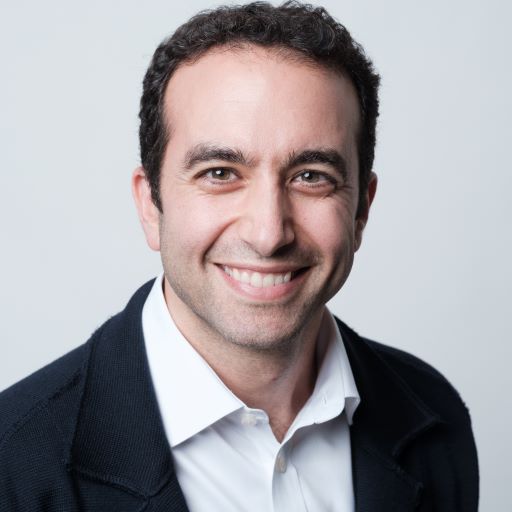Canada is a big country, but it’s young compared to centuries-old cultures like Greece, France, Japan or China. Canada, too, has plenty of wealthy families, even some we might call “old money,” but compared to some of the wealthy families in the Old World and the Far East—well, there’s old money, and then there’s old money. The fortune of Europe’s Rothschilds, for instance, dates back at least to the mid-18th century.
We’ve heard and read that because wealthy Canadian families are young, like the country, they don’t enjoy the benefits of the preparation and planning maturity that comes with centuries of family history. So, what can Canadians learn from Old World families? What lessons do these resilient or legacy families offer about raising children, family office governance and fostering both a sense of stewardship and entrepreneurship?
In a nutshell, what makes legacy families successful is the right balance of what Peter Jaskiewicz, a professor at the Telfer School of Management at the University of Ottawa and the director and founder of the Family Enterprise Legacy Institute, calls a holistic family wealth management perspective.
That perspective “involves not just the financial capital, but also the human capital, the social capital, and what I call the cultural capital,” he says.

Jaskiewicz explains that human capital includes education and work experiences, social capital is the network they can draw upon, including advisors and policymakers, and cultural capital comprises how people believe and behave, including their values, their attitudes and even the type of schools they attended and the people they met throughout their life.
As wealthy families in Canada tend to be first- and second-generation only, they often still need to find the right balance of social, educational and human capital.
Putting governance in place
Jennifer East, an advisor to enterprising families and the founder of ONIDA Family Advisors in Malta, says that in order to survive as a wealthy fifth-, sixth- or seventh-generation family, you have to put structures and processes in place.
Quite often, with newer-wealth families, governance tends to develop ad hoc, in response to succession issues, or a dramatic event such as death or divorce, or founders preferring to spend more time on growing the business than on securing its future, according to Resilience of 100-year Family Enterprises, a 2018 report from Wise Counsel Research.
“In my experience in Canada, because I worked there for many years, not all families are willing, prepared and capable of investing the time and energy and rolling up their sleeves to do this,” East says. “This isn’t something like giving your accountant your tax return and they just send it back to you to sign. This is something the family has to create, and the advisor—someone like myself—can guide and can offer best practices.”

She says that while advisors can help find solutions, it’s up to the family to decide on and put the structures in place.
Jaskiewicz says that when many people start a family office, they don’t necessarily think about what that will be in 100 years. “They’re just in the here and now, and it’s only over time that they realize they need to create the right structures and processes.” He points out that many families don’t have wealth transition plans or plans for how to replace major family members involved in the office.
Not having the right balance of governance in place can lead to alienation, leaving family members feeling sidelined from the business. That challenge includes finding the right blend of family and professional involvement. The Wise Counsel Research report found that while external professional advisors can help, sometimes they have such a strong influence that family members may step away and lose interest in the business.
“[Many families] don’t do much for education or training for younger generations,” says Jaskiewicz. “So there is a big discrepancy between what the purpose is and what they’re really doing, and that is why I say that organic development is not so helpful, because you sometimes might have a big gap between what is maybe your vision and mission and what you’re really doing on the ground.”
Fostering stewardship
“Part of the challenge is incubating in subsequent generations a stewardship mindset,” says Devin DeCiantis, managing partner at Lansberg Gersick Advisors in Toronto. “You are a link in a chain in that you have not earned this privilege, and with that privilege comes great responsibility.”

That means changing the way families think about training and education for the next generation, he says. It might be tempting to give them all the money and resources they need or want, but that may not be in their best interest—in fact, doing so might ruin an entire generation of stewards and threaten the security of the family wealth.
“You end up seeing the wealth dissipate due to bad governance, bad decision-making or just squandering it by overspending—killing and slaughtering the golden goose that would otherwise have laid golden eggs in perpetuity. You basically have to vaccinate the family against the myth that wealth already created is destined to continue.”
One way is for newer-wealthy families to commit to investing in their children’s wealth awareness from a young age. DeCiantis says that doesn’t mean forcing family members to work in the business, as not everyone wants to, but rather fostering an appreciation and understanding of what the family owns and teaching basic financial literacy from an early age, including understanding the difference between assets and liabilities, income, revenue and expenses, and even the differences between debit and credit cards.
East agrees. She says families should provide opportunities for the younger generation to learn about money and investing early. “You could put together your group of children, or even with their cousins, an investment club, where you bring in people like investment managers to teach them about investing, and then they have an opportunity to actually take real risk with real money and learn.”
She says such an approach could also help inspire entrepreneurialism.
Encouraging entrepreneurship
A family’s original money doesn’t last forever. Multiple generations mean more family members tapping the original resources and not exploring new growth, or money leaving the family via divorce, separation, bad investments and external factors like global crises.
This model, known as the S-curve, starts with the founder building up the business, it grows, then it levels off or declines. Legacy families avoid this by focusing on fostering entrepreneurship to grow the business and creating a new S-curve branching off from the old.
All our experts pointed to France’s Mulliez family as an example of successful long-term wealth stewardship and entrepreneurship. They are the descendants of wool manufacturer Louis Mulliez (1877-1952), and there are approximately 1,400 of them. Through the Association Familiale Mulliez (AFM), this five-generation family holds multiple brands that are ubiquitous in France, in supermarkets, sporting goods stores, electronic device shops, hardware stores and DIY centres, restaurants and even a pizza chain.
Jaskiewicz says the Mulliez family provides a model for the successful entrepreneurial family. “They’ve also shared a lot in the public about what they’re doing to become the blueprint for others.”
I think every family, in a way, should be a learning family, whatever they are doing.
Peter Jaskiewicz
He points out that they’re incentivizing family members to become entrepreneurs, to operate smaller companies and grow them. If families aren’t interested in creating new businesses, they can tap into that entrepreneurial spirit by being an investing family.
“It might be, ‘We created this family office, and we’ve been investors around the world in particular sectors, from biotech to solar panels,” Jaskiewicz says.
Other options include being a learning family, with surgeons, architects, artists, or maybe even policymakers. In other words, the scope of encouraged activities is not restricted to business.
“I think that every family, in a way, should be a learning family, whatever they are doing. Not everybody has to become an entrepreneur or an investor or a business leader,” Jaskiewicz says. “The only thing I’m afraid of is what I call a ‘museum family.’”
That’s a family who just live off the achievements of previous generations. All our experts say that to avoid becoming that family, the keys are to get governance structures in place and think long-term—not just in years, but in generations.
Jaskiewicz acknowledges it’s a bit like herding cats, but families need to invest in the next generation, to give them the necessary skills and abilities to make a difference.
“Invest in the larger family,” he adds. “Don’t neglect the importance of healthy family dynamics, and create the structures and processes that you need as families grow.”
The Canadian Family Offices newsletter comes out on Sundays and Wednesdays. If you are interested in stories about Canadian enterprising families, family offices and the professionals who work with them, but like your content aggregated, you can sign up for our free newsletter here.
Please visit here to see information about our standards of journalistic excellence.

